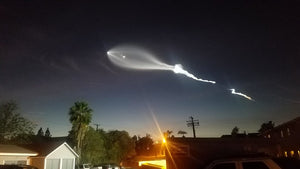November- Lunar Eclipse, Leonid Meteor Shower and Owl Cluster
Lunar Eclipse!
We had two lunar eclipses this year visible from US. The first in May was best on the east coast, but this month’s will favor the west. Keep in mind you’ll need to stay up late (or rise very early) if you want to see it.
The eclipse begins early morning November 8th (night of the 7th) at 03:02 ET / 00:02 PT. Totality, will begin at 05:16 ET / 02:16 PT. Be sure to take a look as the planet Uranus will appear within the same binocular field of view as the Moon’s eclipsed disc.
Leonid Meteor Shower
The Leonid meteors are bright, colorful, and considered one of the most anticipated meteor showers on the year. It takes place through November, but the peak will come on the evening of November 17th this month. The waning crescent moon will give little light interference for added visibility.
The Leonids appear white or bluish white, many are faint, though some can appear outstandingly bright, leaving glowing trails in their wake. It's also been known to produce fireballs, a bright meteor that can leave a streak of color that lingers for several seconds. The fireballs originate from much bigger chunks of comet material, which produces the extra colorful display.
The Leonids are best visible after midnight. The farther you can get from light pollution the better. Let your eyes adjust to darkness for 30 minutes. Dress warmly, bring a blanket, and look up somewhat toward the Eastern sky. Meteors can appear in any part of the sky, although their trails will tend to point back toward the radiant in the constellation Leo.
THE OWL CLUSTER
NGC 457 is called the "E.T." or "Owl" cluster for good reason: There appear to be two prominent "eyes" of 5th and 7th magnitude stars and then a fainter body with arms - or wings - outstretched.







